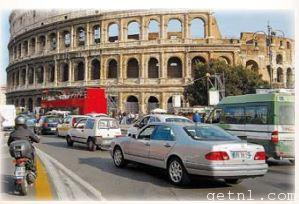Rome’s Colosseum, an ancient circus of death and glory, is a symbol of the city, but across the Adriatic Sea is an equally imposing and magnificent arena in Pula

NEED TO KNOW
LOCATION The Arena is located in the port city of Pula, on Croatia’s Adriatic Coast
CAPACITY 23,000
DAYTIME TEMPERATURES
Jan: 43°F (6°C); Apr: 54°F (12°C); Jul: 79°F (26°C); Oct: 58°F (14°C)
It is generally acknowledged that the Colosseum is one of the greatest engineering feats of the Romans – it was certainly the largest amphitheater they ever built. Standing inside, seeing the tunnels where wild animals would be prodded into deadly games, and climbing the precipitous tiers of the arena, it is easy to imagine an enormous crowd – shielded by awnings from the heat of the day – roaring with excitement and disapproval.
Visiting the Arena in Pula will evoke much the same feeling, except that here the space is more intimate. Chances are that you may well be among a more orderly crowd here, listening to music or watching opera or dance because, unlike the Colosseum, Croatia’s best-preserved classical monument remains a place of entertainment.
As host to the annual Pula Film Festival that hands out the Golden Arena Awards, this amphitheater has been described as the most beautiful cinema in the world. When music echoes around the limestone escarpments of its walls on a balmy summer evening, it is hard to imagine the games of death and gore that were once held here.
Pula was – and still is – an important port, but the Romans sited the amphitheater just outside the city walls on the Via Flavia, which ran up the coast to the ancient Roman city of Aquileia. Today, it sits in an idyllic location overlooking the harbor.
Arena is the Latin word for sand, which covered the central area – it was useful for soaking up the blood. Built at the same time as the Colosseum in the 1st century AD, Pula’s Arena is the sixth largest of the 200 or so amphitheaters that the Romans erected in their centres of power. A particular feature of this amphitheater is the gutter running around the top of its walls that collected rainwater in tanks in four still-standing towers.
Perfume was added to the water, which was then sprayed over what must have sometimes been a less-thanfragrant audience. Of a similar elliptical design to the Colosseum, but one tier shorter and lacking its heavy grandeur, Pula Arena has a much freer, friendlier appeal. Its original banks of seats have long since been removed – some taken to Venice to build palazzi – but a newer semi-circle of seats rises to grassy banks. As you wander around, the audio-tour clamped to your ears, the centuries slip away and you’re transported back in time, but you only become fully aware that this was once an extremely violent place when you reach the dark cells beneath, where martyrs and animals were confined until their final performance.
FORGET ROME’S COLOSSEUM?
THE BUILD-UP American composer Cole Porter said it all when he said, “You’re the top! You’re the Colosseum.” Tourists have been enthusing about the Colosseum since the 18th-century Grand Tour of Europe, which the English elite had popularized. Even as a partial ruin, it can still take your breath away.
THE LETDOWN Italy’s most-visited sight is often crowded and usually has long lines. The entire building is a traffic roundabout and the interior is too precious to host concerts. Your visit will be even more memorable if you fall victim to a pickpocket.
GOING ANYWAY? The Colosseum really is an extraordinary achievement. It’s best to visit early in the morning or late in the afternoon when it’s less crowded. For a good overview, climb to the gallery tier. To avoid lines for tickets, go to the Palatine first – a ticket there covers both sights, so afterwards you can walk straight in.
Getting There and Around
Pula has an international airport 4 miles (6 km) from the city center. The city is not large and buses are efficient means of transportation. Taxis are available and inexpensive. There is a regular boat from Venice in summer.
Where to Eat For cutting-edge dishes in a beautiful setting, it’s hard to beat the award-winning Valsabbion, part of a hotel and spa. Near the Arena, the Pizzeria Jupiter is known for its pasta and pizza.
Where to Stay Most accommodations are onthe Verudela Peninsula, Pula’s playground to the south of the city. A short walk from the Arena is the small Scaletta Hotel.
When to Go Being a tourist center, Pula is more crowded in summer. Warm weather makes it pleasant during Mar–Oct. Check in advance for details about the events held in the Arena.
Budget per Day for Two US$175 including a visit to the Arena, food, and accommodations.